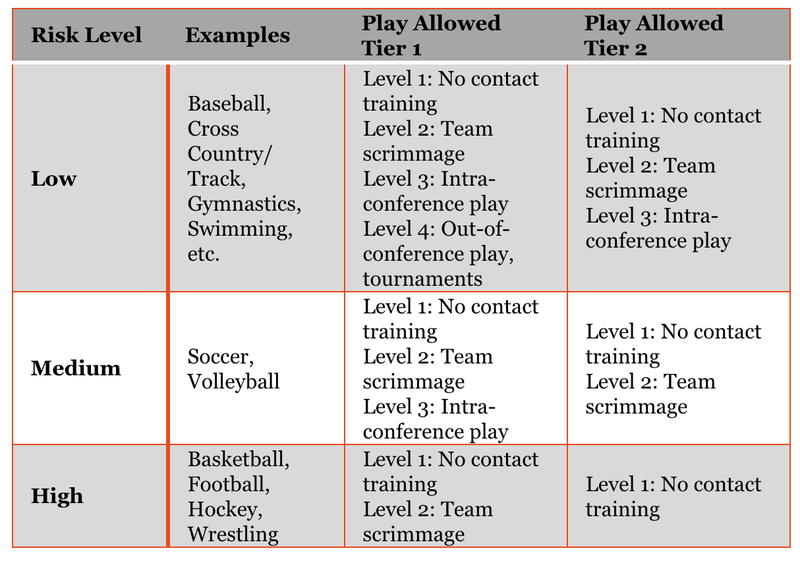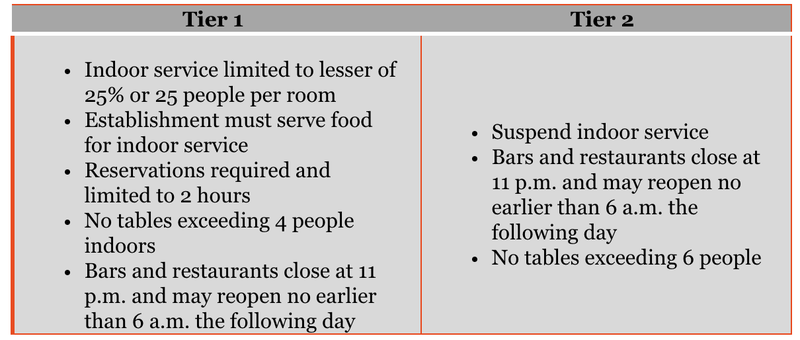
CHICAGO (WBBM NEWSRADIO) -- Governor Pritzker announced Friday regions across the state are now eligible to move out of Tier 3 mitigations, following a decrease in COVID-19 test positivity rates and hospitalizations throughout Illinois.
Tier 3, implemented shortly before Thanksgiving, is the strictest tier of Illinois’ resurgence mitigation plan.
Effective immediately, Region 1 (Northern Illinois), Region 2 (North Central Illinois) and Region 5 (Southern Illinois) will move down into Tier II from Tier III, the governor said.
Of the remaining regions, the data shows most "are on track to leave Tier III in the coming days if current trends hold," Pritzker said.
IDPH will continue to monitor the regional metrics and move regions down to Tier 2, to Tier 1, and ultimately back to Phase 4 of the Restore Illinois plan on a rolling basis.
"Each of these tiers serves as a way to ensure that we prevent or slow down any potential surge of infections in response to more things opening up," he said.
Some examples of loosened mitigations in Tier 2 include the return of group fitness classes, the return of lower-risk youth and recreational sports, and the reopening of cultural institution, like museums, at 25 percent capacity with social distancing.

"My great hope is that all of our regions will move out of the tiers of resurgence mitigations. And, with vaccine shipments from Pfizer and Moderna hopefully increasing in the coming weeks and months, with new vaccinations potentially receiving approval from the FDA, and with an organized whole-of-government effort by the new president's administration gradually, as we move through the spring, we will see meaningful reductions in COVID illnesses and deaths," Pritzker said.
With the advice of infection control experts and infectious disease experts, Illinois set a standard of three metrics for loosening restrictions as the data began to show improvement, they include, sustained hospital capacity at or greater than 20 percent; a steady or decreasing number of hospitalized COVID-19 patients in each region; and, a decreasing regional, seven-day average test positivity rate.
Pritzker announced that regions could resume moving out of the tiered resurgence mitigations - Tier 3, Tier 2, and Tier 1 - and back into Phase 4 on a data-driven basis. Regions that are able to move into Tier 1 will have the cap on gatherings expanded to 25 people; plus will now allow indoor service at bars and restaurants.
"Bars and restaurants have carried an extremely heavy burden throughout this public health crisis through no fault of their own," Pritzker said.
In order to move to Tier 2 mitigations, a region must meet the following metrics:
• A test positivity rate below 12 percent for three consecutive days, as measured by the 7-day rolling average; AND
• Greater than or equal to 20 percent available staffed ICU and medical/surgical hospital beds for three consecutive days, on a 3-day rolling average; AND
• A sustained decrease in the number of people in the hospital with COVID-19 for seven out of 10 days, on a 7-day average.
In order to move to Tier 1 mitigations, a region must meet the following metrics:
• A test positivity rate below 8 percent for three consecutive days, as measured by the 7-day rolling average; AND
• Greater than or equal to 20 percent available staffed ICU and medical/surgical hospital beds for three consecutive days, on a 3-day rolling average; AND
• No sustained increase in the number of people in the hospital with COVID-19 for seven out of 10 days, on a 7-day average.
In order to move to Phase 4, a region must meet the following metrics:
• A test positivity rate less than or equal to 6.5 percent for three consecutive days, as measured by the 7-day rolling average; AND
• Greater than or equal to 20 percent available staffed ICU and medical/surgical hospital beds for three consecutive days, on a 3-day rolling average; AND
• No sustained increase in the number of people in the hospital with COVID-19 for seven out of 10 days, on a 7-day average.
"There is no 21st Century pandemic playbook, but it has always been my goal to balance supporting our hospital systems with supporting economic vitality and a strong recovery. As we ramp up vaccine distribution efforts across the state, we're able to adjust our mitigation efforts further while maintaining that balance."
Any region that meets criteria for Tier I of Illinois' resurgence mitigations will be able to allow indoor dining, at the lesser of 25 people or 25 percent capacity per room, with tables of no more than 4 people.
"And of course any regions that have improved enough to move back into Phase 4 and our of Tier 1 can resume some greater indoor operations at bars and restaurants, as long as tables are kept six-feet apart just like last summer. The same rules still apply," Pritzker said.

The closure of indoor service still applies in regions that remain in Tier II and Tier III.
"In other words, those with a positivity rate at or above eight percent or 12 percent, along with failing to meet either of the hospital metrics, until they are able to meet the Tier 1 standards," Pritzker said.
"Clearly, some progress has been made to combat this virus across our regions. But I want to stress that it's incredibly important for Illinoisans to not let their guard down," Pritzker added.
Illinois has formally identified the state's first case of the more contagious British variant. Additionally, there are also new variants from Japan, South Africa, Nigeria and Brazil "that we also know a little bit about. But, again, it's the British variant that's been identified, the first case of it, here in Illinois. We must remain vigilant if we are to maintain our progress."
Meanwhile, state health officials reported 6,642 new cases of COVID-19 statewide. The new cases were among 107,156 tests sent to the Illinois Department of Public Health over the past 24 hours, lowering the state’s test positivity rate to 6.5% from 6.8%. The state also reported 123 additional deaths.
The total number of coronavirus cases now stands at 1,059,324 since the start of the pandemic, health officials said. At least 18,049 people in Illinois have died from the virus.
As of Thursday night, 726,475 doses of the COVID-19 vaccine have been delivered to providers in Illinois, plus an additional 268,525 doses allocated to the federal government’s Pharmacy Partnership Program for long-term care facilities. This brings the state’s total doses to 995,000.
At least 447,348 doses of the COVID-19 vaccine have been administered so far in Illinois, including 56,624 for long-term care facilities officials said.

